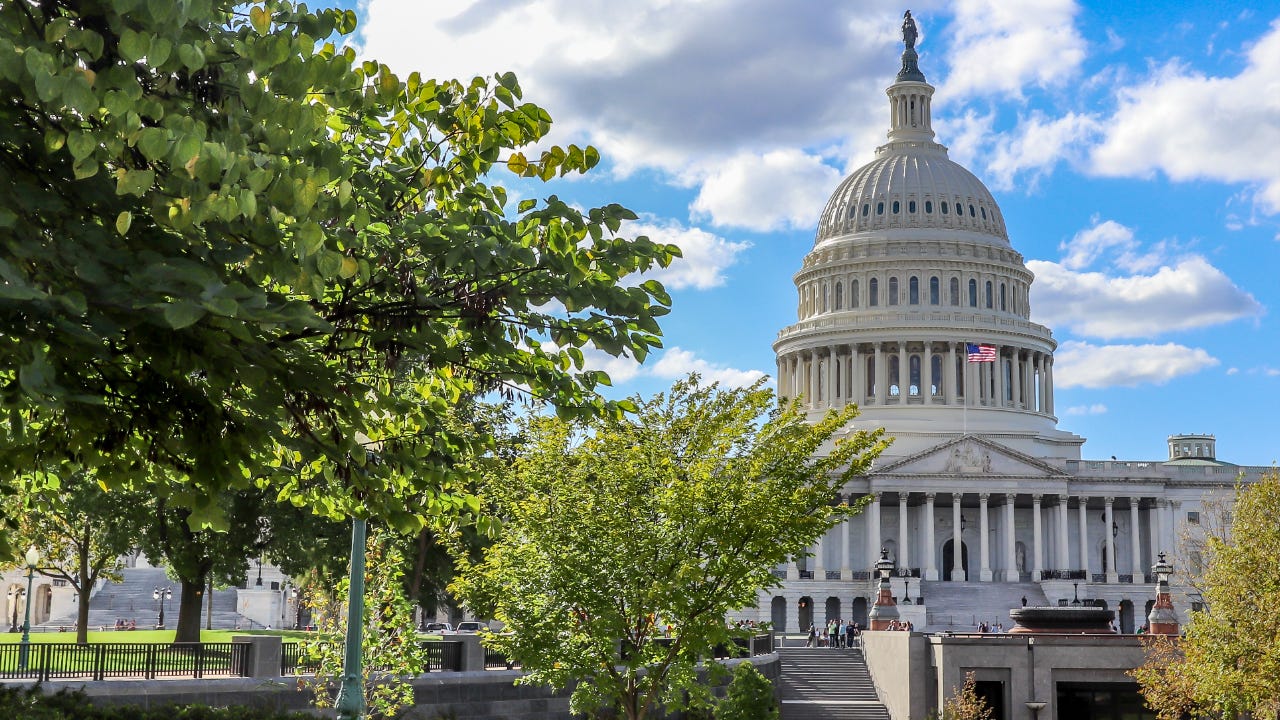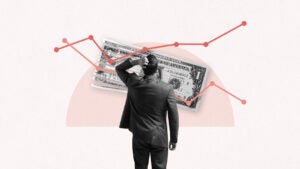Second stimulus check and extended unemployment benefits? Here’s what aid could be on the way

The U.S. economy is showing signs of healing, months after Congress pumped trillions of dollars into the financial system as a backstop against the harshest downturn in decades. But experts say a long road lies ahead for the economy on its path back to normal following the effects of the coronavirus crisis.
Another round of fiscal stimulus could be a crucial driver on how that journey plays out.
The surprisingly strong jobs and retail sales reports for May were all welcomed signs after months of hard-to-fathom economic data, with employers adding 2.5 million new positions and the unemployment rate edging down to 13.3 percent in the month while receipts at restaurants and stores grew by a record 17.7 percent. The snapback suggests the worst from the pandemic might be over as states walk back restrictions that kept consumers at home en masse and left nearly 1 in 4 U.S. workers out of a job.
But it also has the characteristics of a double-edged sword. While many economists attribute that quicker-than-expected rebound in hiring and spending to CARES Act-backed aid — Congress’ third fiscal care package in response to the pandemic — they say it might incentivize lawmakers to shut off the aid tap prematurely, undercutting the recovery.
“Stimulus fatigue is at the top of my economic risks at the current time,” says Joe Brusuelas, chief economist at RSM. “Deep recessions or depressions are not fate; they’re policy choices. And right now, an optimal policy choice would be putting forward another round of aid.”
Mnuchin: Fourth stimulus bill focused on ‘getting people back to work’ forthcoming
Lawmakers have expressed concerns about spending their way out of the downturn, with a chorus of voices on Capitol Hill recommending the economic impact from the largest aid package in modern history be fully realized before passing another substantial bill.
The wide-sweeping CARES Act gave Americans $1,200 (or more) in direct cash payments, boosted unemployment benefits and established a forgivable small business loan program known as the Paycheck Protection Program (PPP), among other provisions.
The pot of PPP money, a crucial source of funding for the hundreds of small businesses roiled by the pandemic, has been replenished two times, with about $130 billion in aid untouched as of June 9. Meanwhile, the additional $600 in weekly unemployment payouts is set to expire at the end of July. The last round of stimulus checks aren’t set to disburse until September.
Still, policymakers have made known plans to pass another relief bill, though how big that package may be and how soon it can come to fruition are still up in the air. Treasury Secretary Steven Mnuchin said on June 11 that a fourth bill focused on getting people back to work is on the table, but talks likely won’t pick up until late July. Congress is scheduled to take a two-week recess starting July 3, returning to the Hill on July 20.
Mnuchin’s comments come nearly a month after the House of Representatives passed the $3 trillion HEROES Act on May 15, legislation that analysts called “dead in the water” given the differing priorities on both sides of the aisle.
“Any direct aid into consumers’ pocketbooks that you can get is helpful, not only in putting a floor in your wallet, but having to propel people back to work,” Brusuelas says.
White House officials have pushed for a payroll tax cut, while Republicans are pondering incentives to get people back to work instead of reviving the unemployment benefits extension. Democrats have other wishes, which primarily includes providing aid to state and local governments.
That laundry list of policies matched with the election year uncertainty adds more pressure for both parties to come to an agreement, says Greg Valliere, chief U.S. policy strategist at AGF Investments. Senate Majority Leader Mitch McConnell (R-Ky.) has stated that the next package could be about $1 trillion, a total Valliere foresees as well.
“You look at the three distinct factions, and all of them have things they want,” he says. “Trump realizes that if we have another big stimulus bill, it’ll be good for the economy and the markets, and whatever is good for the economy is good for election prospects.”
Another stimulus check or a payroll tax cut? Here’s what could end up in the next round of aid
Even with the economy rebounding, tens of millions of Americans are still unemployed. Federal Reserve Chairman Jerome Powell recently provided a grim assessment of the post-pandemic economy that includes elevated unemployment for years to come, with officials updating their economic forecasts to show joblessness just under 10 percent at year end.
That reality has left many Americans wondering if they’ll get more help from the government.
1. Another stimulus check
Another round of direct cash payments would be what impacts Americans’ wallets the most. Mnuchin said it’s being considered; however, the economic recovery is at the forefront right now.
“This is going to be all about getting people back to work,” Mnuchin said.
The House’s HEROES Act proposed a more generous version of the payments, with checks of up to $6,000 per family — $2,400 per married couple and $1,200 per dependent for up to three children. A separate proposal from Sens. Kamala Harris (D-Calif.) and Bernie Sanders (I-Vt.) propose sending monthly payments of $2,000 to Americans making less than $120,000. More funds would go out to married couples and parents with children under the age of 17.
Another round of checks is possible, but odds are it’s unlikely to be as substantial as the $1,200 payment, Valliere says. “It certainly wouldn’t be at the level of the previous one. It would be a lot less.”
2. Revamped unemployment benefits
Given fears of an extended elevated unemployment rate, economists and lawmakers alike have worried about the consequences of kicking individuals off from unemployment benefits, as well as the bonus $600 weekly check, come August.
Congress appears to be divided on how best to move forward. Both sides generally agree that Americans shouldn’t be left high-and-dry when the CARES Act-backed boost expires. Yet, Democrats have been vocal about reinstating the additional $600 weekly benefit, while Republicans fear it creates a moral hazard by disincentivizing Americans to go back to work. The Trump administration, on the flipside, is considering reducing the weekly payout from $600 to $250 or $300 during the latter half of the year or capping weekly earnings depending on how much workers earn in their regular wages.
“It needs to be reformed in terms of the amount and structure, but we can’t just keep giving people in some cases twice as much in unemployment benefits to stay home as they would make if they went back to work,” says Shai Akabas, director of economic policy at the Bipartisan Policy Center. “It’s clear that, come August when these benefits expire, there’s still going to be millions of people out of jobs with limited prospects of finding one.”
3. Tax credits and incentives
To fill that gap, some Republicans have proposed incentivizing more hiring and working by providing tax credits to firms and employees. That could be in lieu of the weekly $600 benefit, Valliere says, given the concern that it might keep more people willingly out of work for longer.
But it raises other concerns for those who’ve been working during the pandemic, among other fears that the system could be exploited, Akabas says. “We have to think carefully that it can’t be gamed, where you work and then you come back to work. It’s an interesting component of the picture, but I certainly believe strongly it cannot be an entire substitute to the continuation of unemployment insurance.”
White House officials are also reportedly considering providing tax credits to individuals who dine out or take a vacation within the next three to six months as a way to get the gears of commerce chugging along again.
Such proposals include what’s being touted as the “Explore America” tax credit, which would provide U.S. families with up to $4,000 in deductions for dining out and vacationing domestically. The president’s initial proposal floated in mid-May — cheered by the U.S. Travel Association and Independent Restaurant Coalition — would let individuals deduct up to 50 percent of their expenses made at U.S. airlines, rental car companies, theme parks, hotels and restaurants in 2020 and 2021.
4. Payroll tax cut
The Trump administration’s most touted proposal has been a payroll tax cut, though both Republicans and Democrats have spoken out against it. Pushback is mounting over criticism that the tax reprieve might not provide much help, given that tens of millions are unemployed and therefore unable to take advantage of it. Supporters of the program say it could provide U.S. workers with an immediate tax break on their paychecks, which can thus be circulated back into the economy through spending.
The president and his aides have also floated provisions that include a payroll tax holiday or a capital gains tax cut for investors.
5. Aid for state and local governments
Although indirectly impacting Americans’ wallets, one of the other biggest challenges tied the coronavirus pandemic has been largely on the doorstep of state and local governments. A loss in tax revenues has hit their budgets hard, matched with a pickup in spending on health care and unemployment payouts. Threats of layoffs are looming at a time when states’ balance sheets were already in a precarious position. Economists have warned this could be a drag on the U.S. economy moving forward, similar to the Great Recession of 2007-2009.
The Fed already has some skin in the game through its municipal credit program, which will help states and municipalities with financing by way of bond-buying. But lawmakers on Capitol Hill are pressing to get more involved, with Democrats listing it as one of their “must haves” when it comes to package negotiations. The HEROES Act earmarked about $1 trillion in funds for these hard-hit corners of the country. Democrats will likely push for a similar amount in another round of aid.
“State and local government spending has risen, and they have to have balanced budgets most of the time. There’s no way for them to make that work without shedding a significant amount of their workforce,” Akabas says. “We shouldn’t be bailing out states for budget problems that they had pre-crisis, but what we do need to do is make sure that they’re not put even further into the red.”
In fight against pandemic’s economic effects, flexibility from Congress will be key
Even with more rounds of aid, it doesn’t distract from the overall shakiness of the economic environment. A second wave that forces states to enact another round of lockdowns could keep even more out of work — and punish the economy further in the long run. It suggests that Congress must be flexible and agile in the face of the pandemic, “which is not usually two words you hear used in the same sentence as Congress,” Akabas says.
Congress might want to consider adopting a target much like the Fed does when deciding whether the economy still needs more support, Brusuelas says. That could mean targeting real gross domestic product (GDP) or different measures of unemployment.
Even as the U.S. economy rebounds, the trick for policymakers is going to be remaining cautiously optimistic about its direction, and keeping their foot on the gas pedal to provide the economy with more juice when it needs it.
“If we start turning off the federal support that’s been provided over the past few months that continues to be needed, I’m worried that the recovery will be cut off at its knees,” Akabas says. “That could put us in for a very long, protracted downturn, as opposed to a somewhat quicker recovery by further federal support. Millions and millions of American families are really struggling right now.”
Featured image by Kris Zaporteza of EyeEm.
Learn more:
You may also like

What is a second mortgage, and how does it work?

Do I have to pay my student loans if I’m unemployed?



